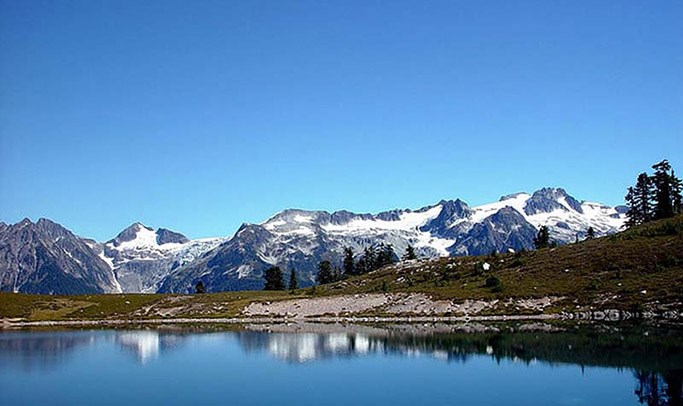Squamish is sitting below a ticking time bomb – just ask Steve Quane from Quest University.
The school’s professor of geology received $12,000 from an American educational institution in July 2014 to map and assess the danger of Garibaldi Lake.
The lake was formed more than 10,000 years ago from the eruption of Clinker peak. The lava flow formed a barrier in the valley. Dr. Quane’s research will map the bottom of the lake, which is the floor of the old valley.
The provincial government deemed the area immediately below the lake to be unsafe for human habitation in 1981 due to its instability in the face of volcanic and tectonic activity or heavy rainfall.
Quane’s research confirms the widely held belief that the lake could wipe out Squamish; if its barrier ever breaks, it would be catastrophic.
“The lava barrier is an unstable dam for this big lake in the mountains above a town,” he said. “The potential energy at 1,400 metres elevation, of 1 trillion litres of water, is 200 times the energy released by the bomb on Hiroshima.”
It’s not known when or if the barrier will ever collapse.
“Geologically, the chances of this happening are almost certain,” he said. “But the probability of it happening in our lifetime is really low.”
Quane’s research will allow him to get a calculation of the volume of the lake and give him a chance to analyze the bedrock contained in the barrier.
According to Quest student Greyson Herdman, the hazards of the lake are well known by the District of Squamish (DOS) but there’s not a lot the district can do. Herdman has been hired by the DOS to write a new flood report and has been examining the various water hazards the district faces.
“If the barrier were to explode or fall apart in an earthquake, the wave that would be produced by all that water flowing out of Garibaldi Lake down into Squamish would be 120 metres high,” he estimates.
“That’s what the DOS recognizes and doesn’t even talk about because we can’t do anything about it.”
Quane said the barrier is crumbling over time and there is rock continuously falling off the barrier. The reason for the decay could be because water escapes through the bottom of the barrier.
“Rubble Creek is actually draining from below the dam so one thing you could argue is that it is undermining the lava flow,” he said. “And that’s bad for the dam.”
Quane said his research will allow him to quantify how much dam there is, where it is and where the weak points are.
Quane’s funding lasts until July 2015. He plans to do two types of research. The first method takes place during the winter and they will bore holes into the ice to take water samples. The samples allow them to determine how the water system works. The second method will be used in the spring, when Quane and his team will map the bottom of the lake using a BC Parks boat, sonar and GPS.
He hopes to have more information on the stability of the barrier after his research, and he looks forward to understanding what he describes as the system of a stunningly beautiful geological spectacle.
– With files from Ben Lypka/The Squamish Chief




